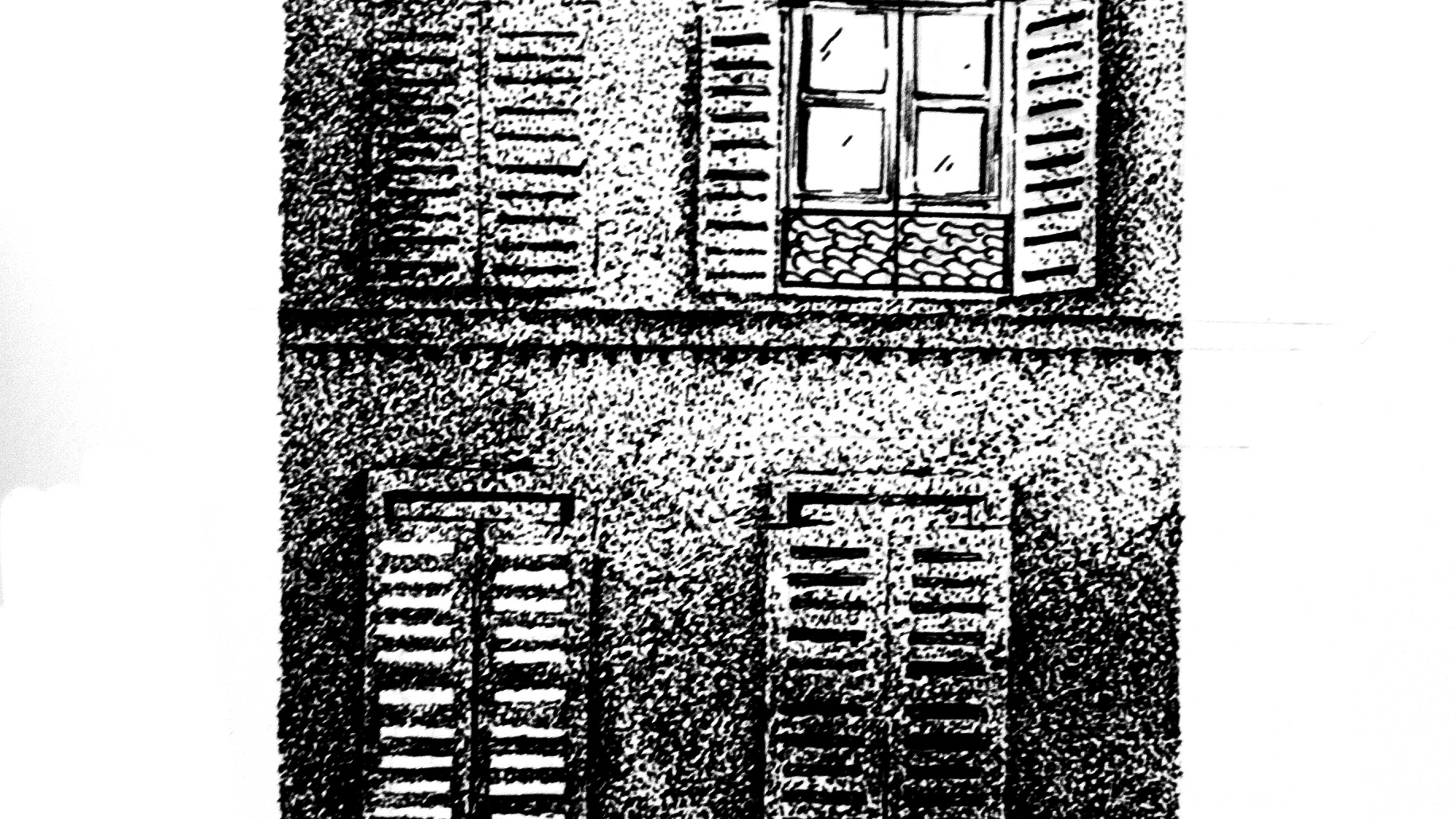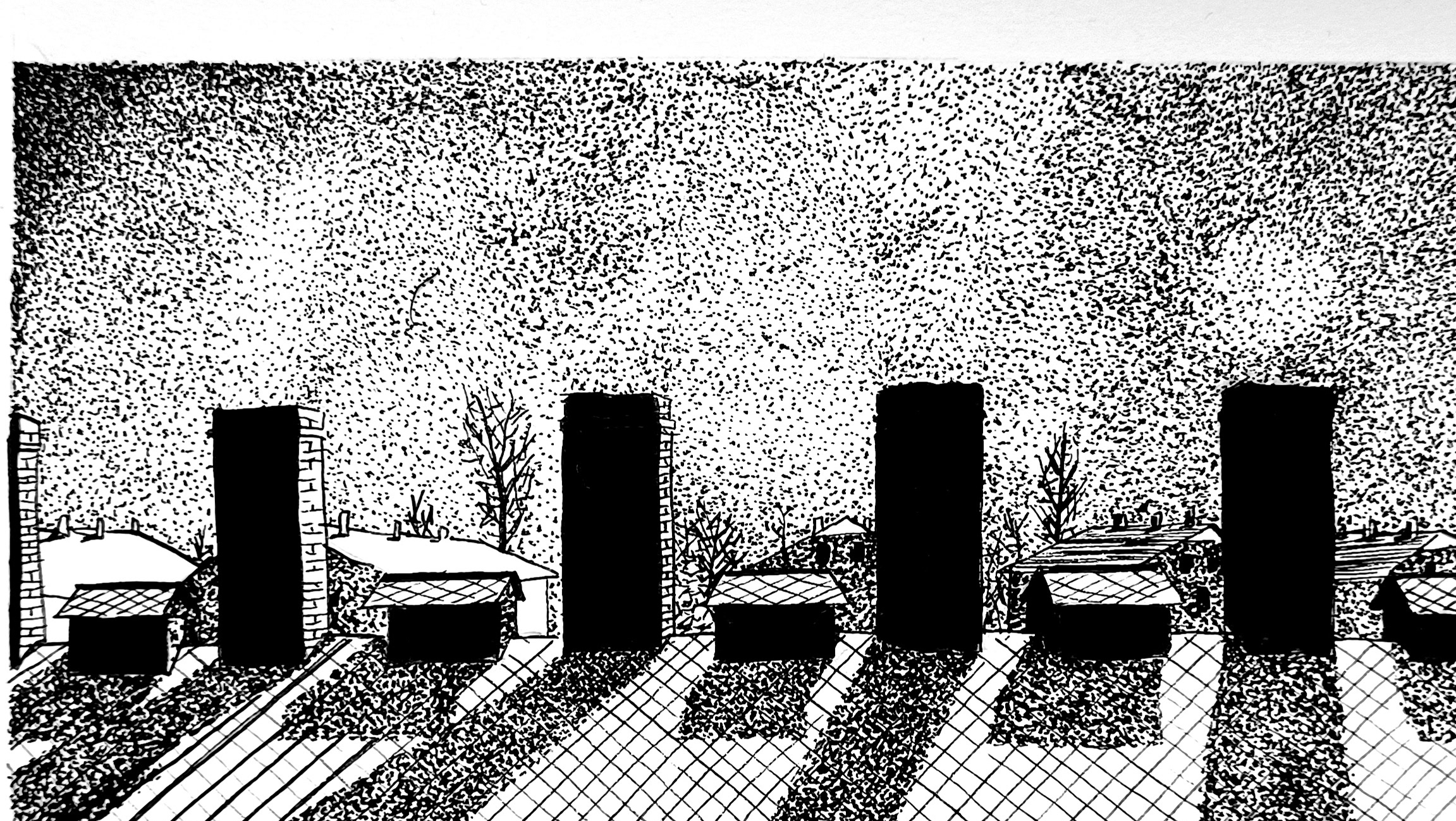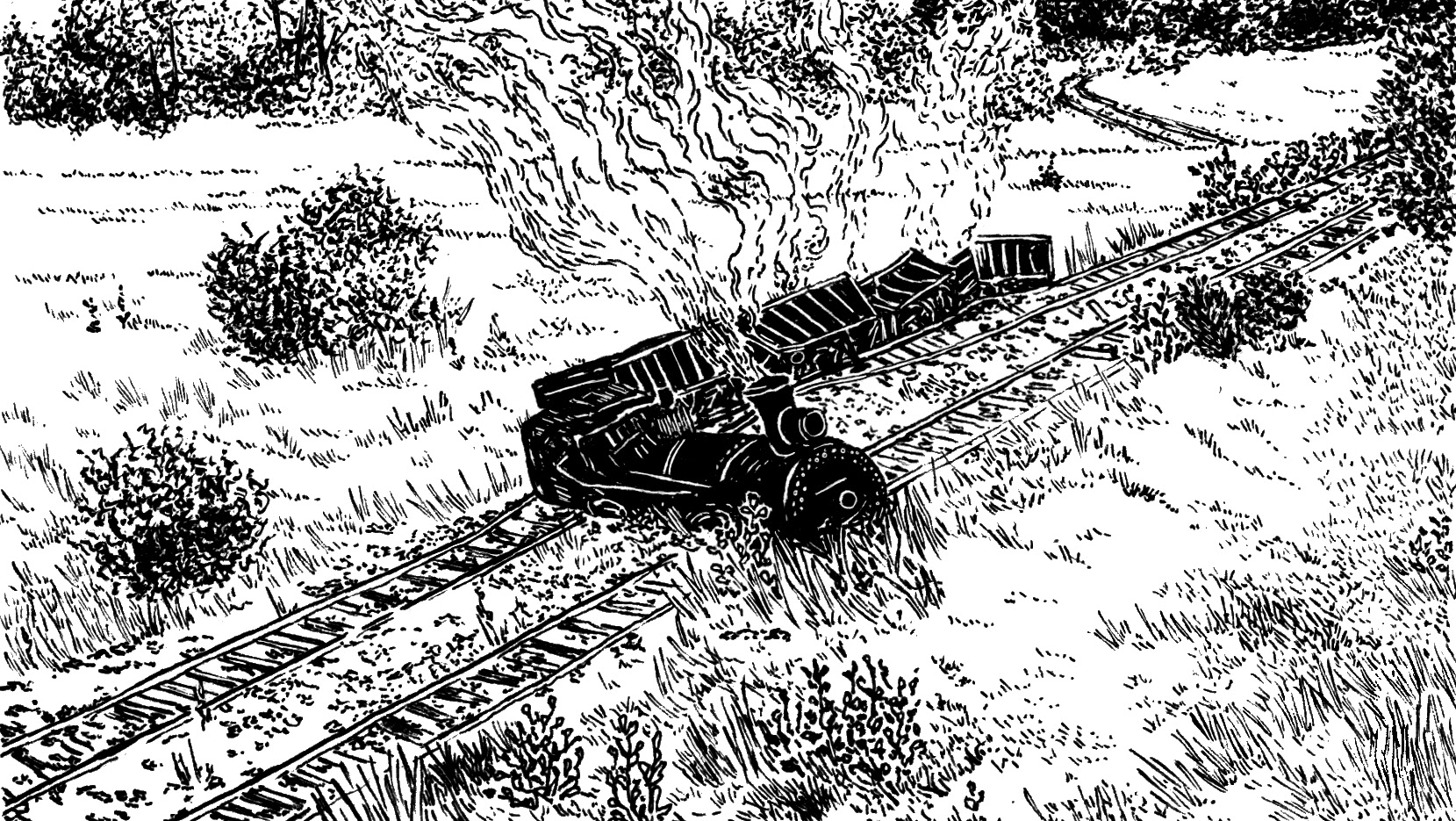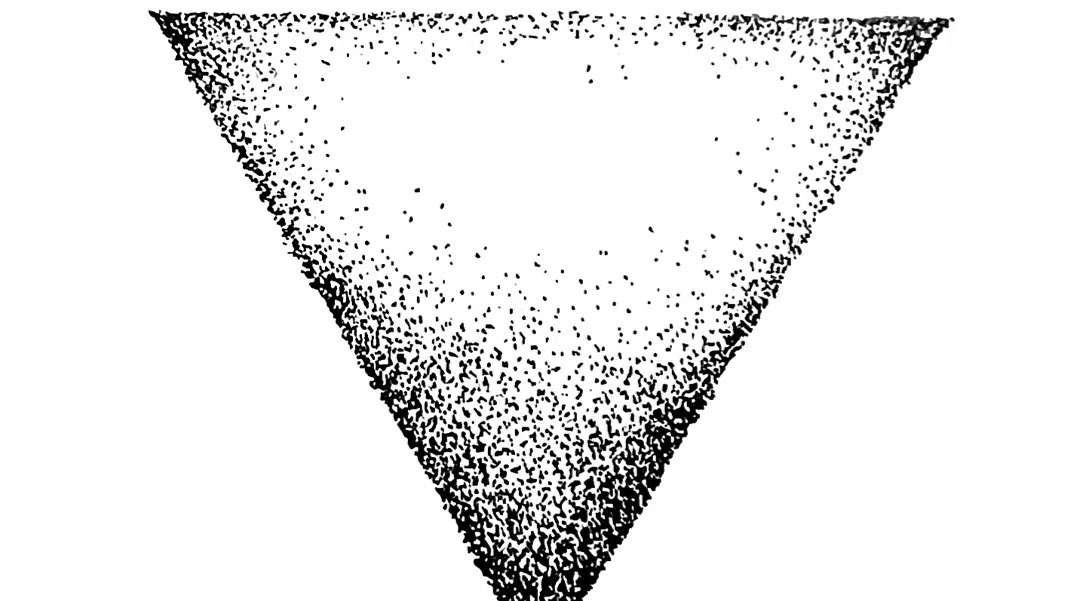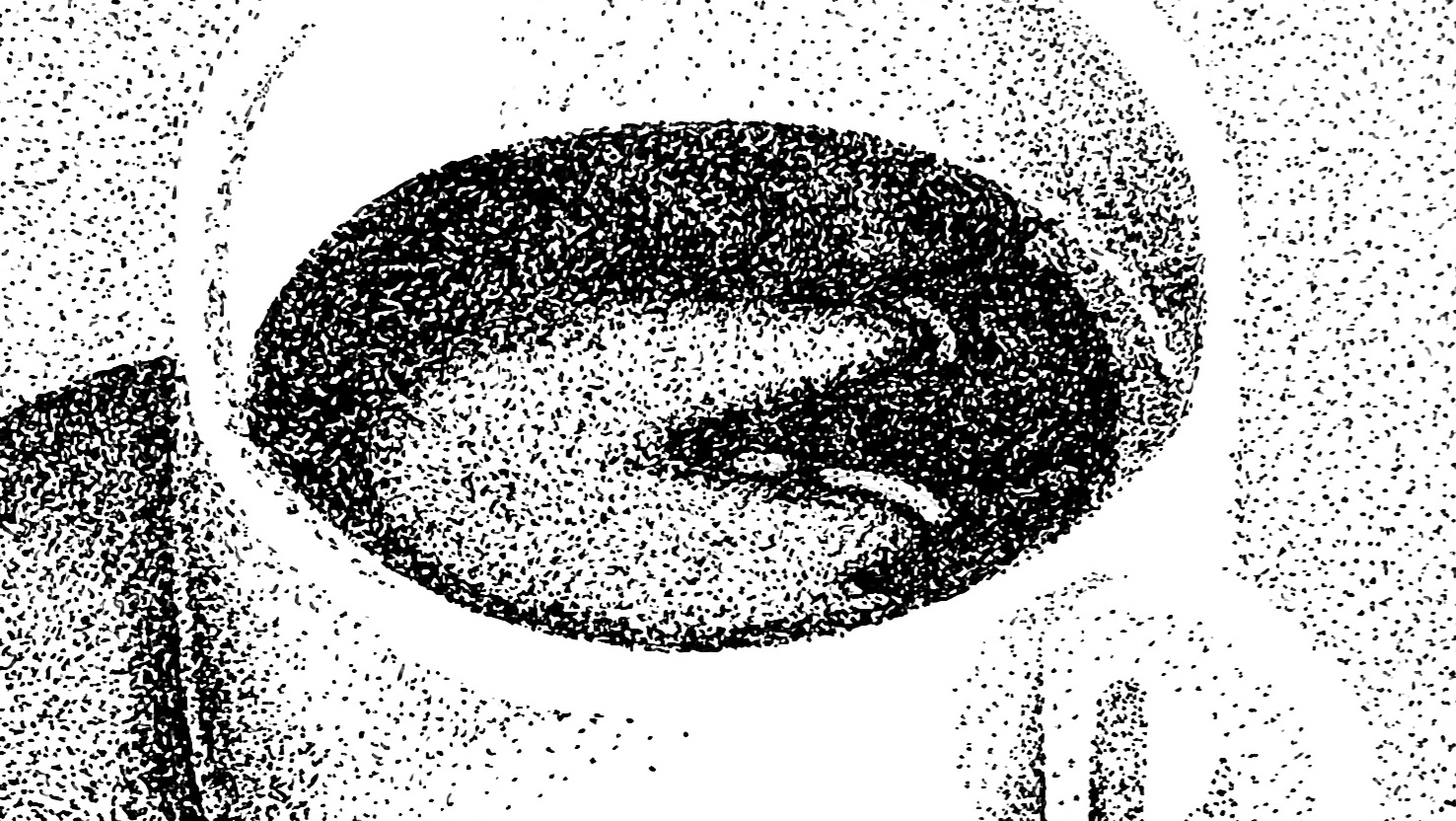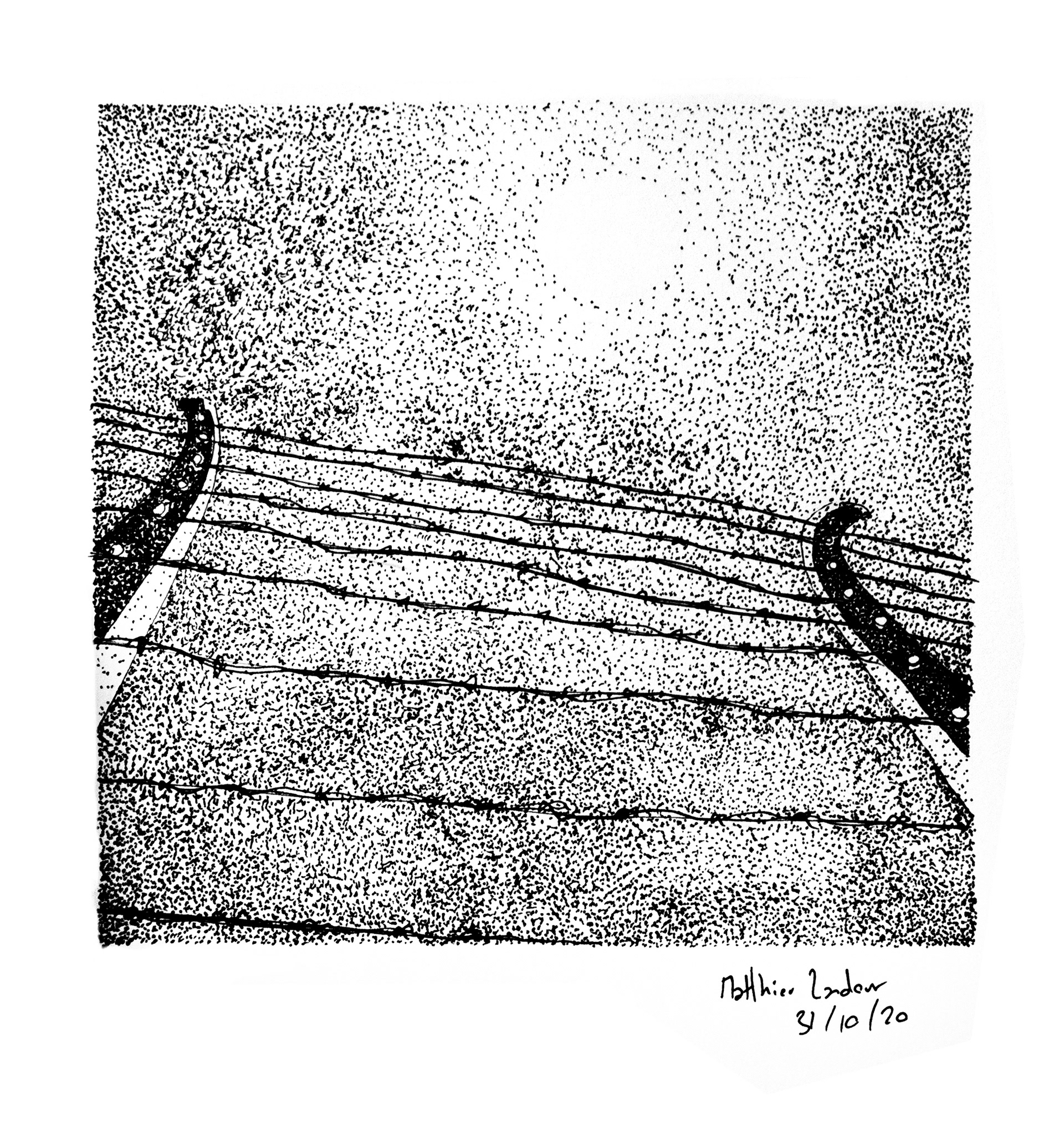
the electric lines
Rene loves life. But how can you love anything, or anyone, in such a place?
Today is the second day of October in Auschwitz, Rene Perrault is alone. The camp is getting bigger and bigger, and more prisoners mean more security. The barbed wires have just been replaced by electric fences, no one dares to get too close to it anymore.
Rene was just a kid. He was also a 21 years old resistant, born in 1919, a year after the First World War ended. Rene loved to draw, he loved people, his friends, he fell in love, he was heartbroken. That's all he should have been thinking, at 21 years old, but France lost, and France started collaborating with Germany. So Rene thought about other things, at 21 he started resisting.
There are many ways to resist, sabotage is one way. Yet who should you sabotage? The german soldiers? The french government? Does it matter? Isn't it the same?
It was the same to Rene, there was no difference. In August 1940, Rene, along with friends he gathered, destroyed the electric lines of the french railway, the SNCF. You could say he was sabotaging his own country, yet those electric lines were specifically used by the german army, so tomatoe tomatoes.
Rene was apprehended by the police, he was interrogated, threatened. But Rene didn't care. Eventually he was arrested.
In July 1941, Rene arrived in Royallieu, he would stay one year there. Rene didn't care, he kept on drawing, dreaming, living. Thanks to the efforts of the communist party, convinced of a promising future, the camp almost worked as a university, where each and every prisoner was formed to become the next elite. And he met Emile Drouillas again, whom he knew from before, whom he was even neighbours with as a young man. Emile Drouillas was a fantastic man, eager to help, to learn, and an inspiration for everyone. Emile was like a big brother to Rene, advising him, always with a kind word, a smile. Royallieu may have been a prison camp, Rene had all he needed there, as long as Emile Drouillas was still around.
Auschwitz-Birkenau is not a place you could have imagined, you could never have been prepared for it. Rene can do none of the things he enjoyed so much before. He can't draw anymore, there are no pens nor paper. There would be nothing to draw anyway, the colours have run away from here, and there is not enough pencils on this world to draw the darkness of this place.
People die every day, of hunger, of fatigue, of disease, or they are simply murdered. The administration of the camp doesn't care for a second if someone dies, there are trains coming all the time, everyone is being replaced.
And there are the jewish women and men, an entire people who come here to be exterminated. There is no other way to put it, extermination. An entire population comes here every day, of all ages, from children to elders. Yet there are so few children or elders in the camp, which can only mean there are murdered right as they arrive. Rene has heard stories, mass graves in the woods, killings trucks full of poison, gas chambers, crematoriums. Rene believes it all, and the dark smoke in the air is proof enough to him that the jewish population is being massively slaughtered here, as well as the Jehovah witnesses, the homosexuals, the poles, the Russians, the Tsiganes and the handicapped.
Rene himself knows he can't hold this situation much longer. Hours of waiting outside in the morning and evening to be counted, repetitive and difficult work, sparse food and sleep, all those quickly take a toll on the human body. Summer was hot, sweaty, Rene can't help thinking that winter will be worse. .
Emile, Rene thinks constantly about Emile. He lost his energy even quicker than the rest of the 45000, the reason was simple, he ate even less than the others. Rene, Jean Rouault, and many others gave him as much food as they could share and find, yet Emile always found someone he believed was more in need than him and gave him his ration. This is the kind of man Emile was, a kind soul, a warm smile. This camp is not made for kind people, this place swallows everything and everyone.
One day in September, a kapo looked at Emile and told him to go to the Revier. Emile refused, but he had no choice. Rene wanted to come with him, the kapo refused, as if he was doing Rene a favour. So Emile went to the Revier, Rene went to see him as often as he could.
One evening, the Revier was empty, Emile was missing. Apparently, the place was disinfected, so to avoid any propagation of viruses. The patients were disinfected too, as the guards said. It meant they boarded a bus, and were all selected to die, most probably sent to the so called gas chambers. Emile disappeared, so did Jean Cazorla, Georges Thorez, Roland Lebel, and more than a hundred 45000.
Back to the present, there is no hope anymore, there can't be any more hope. In the morning, as all the kommandos are being formed and the prisoners counted, Rene breaks the formation. He walks slowly towards the electric lines circling the camp. The SS don't react at first, but when they realise what Rene is about to do, they start smiling. They are curious about those electric fences too, they wish to know if it works, so they don't stop Rene.
Rene walks with purpose, he knows he will die, but maybe he'll die on those fences and break them, maybe he'll sabotage the electric lines once more, just like he did back in France, with his friends.
The electric lines work perfectly, Rene has no effect on it, he just touches it briefly and falls to the ground, dead. He was just a kid.
Notes
Thank you for listening to this episode of 31000/45000, the story of 2 trains of French members of the resistance. My name is Matthieu Landour Engel and I have received a regular French education about the second world war in high school, back in 2001.
This episode was about Rene Perrault, a man who allegedly ended his life in Auschwitz.
Originally, the fences were not electrified, there were barbed wires. Given the several escape attempts and the growth in prisoners, the camp was later surrounded in electric fences, which extended to 13 kms I think.
According to the museum of Auschwitz, who was reviewing my work, we cannot confirm the exact date of the installation of the electric fence in KL Auschwitz. However, it is known that in November 1941 70% of it was installed. Better sources can be found in the book the architecture of crime, by Teresa Swiebocka.
Rene Perrault was very close to Emile Drouillas, and they participated in a number of classes available at the Royallieu camp. The prisoners were to wait , some for more than a year, so they organized a community which created a series of courses for anyone who wanted to learn classes like mathematiques, french, german, italian, esperanto even. Those classes were given by teachers such as Georges Cogniot, Andre Lermite, Yves Jahan, Georges Varenne, … The community also organised events such as sport competitions, or theater performances, like the one where Julien Villette performed.
Rene Perrault was an exceptional artist, I will link to you some of the pieces he created. Another great artist amongst the 45000 was Claude Chassepot.
I am making assumptions about Rene Perrault and why he wished to end his life. I probably shouldn't make those assumptions, it's a personal feeling, losing a dear friend could have been too much for him, I supposed it as I believe it could have been too much for me.
I have been lucky to be in contact with Jeannette Roquier Drouillas, the daughter of Emile Drouillas. She kindly told me about Emile Drouillas, a fantastic man, devoted to his family and to a brighter future for them he believed in. I would like to recommend a book written by Jeannette Roquier and her sister Renee Thouanel Drouillas, Emile Drouillas, dit laporte.
I have been trying to find Rene Perrault’s relatives, unfortunately, my research was unsuccessful. If by any chance, you know of someone related to him please let me know, I would be very pleased to get in touch and make sure the text I wrote doesn’t contain any errors.
My sources for this story are the book red triangles in Auschwitz, by Claudine Cardon Hamet, the website deportes-politiques-auschwitz.fr, memoire vive and the foundation for the memory of deportation website and the fantastic website auschwitz.org .
Thank you for your time and attention, next episode will be about Roger Debarre and the signet ring he managed to smuggle to the camp.

